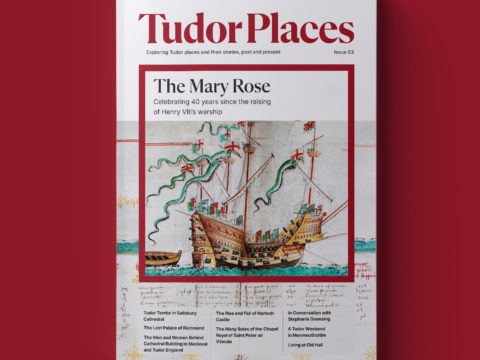Death and the Virgin
The death of Amy Robsart, the young wife of Lord Robert Dudley, has been shrouded in mystery since the day her body was found at the foot of a staircase with a broken neck on 8th September 1560. Did she commit suicide? Did her husband have her murdered, so that he could be free to marry Queen Elizabeth, who showed every sign of being in love with him? Was he framed by those who opposed a match with Elizabeth and wanted to blacken his name? Or was it just a tragic accident?
Skidmore has undertaken an impressively detailed review of all the evidence. He traces the story of Robert and Amy’s marriage – probably a love-match, as although Amy was heir to a comfortable inheritance, she was not of the near-royal rank of spouses of some of Robert’s siblings. But having married in haste, it is soon clear that Robert repented it – his wife had no connections to help an ambitious young courtier, and the couple were childless.
Overcoming the treason of involvement in the attempted coup of 1553, against the rightful heir to the throne, Mary, Robert was rehabilitated following his service in France to King Philip, and from the very first day of Elizabeth’s reign he was by the new queen’s side. Soon, it was rumoured that they were lovers. Skidmore traces the details of the early marriage negotiations Elizabeth entered into, showing how Robert either promoted them, or worked against them, to try to protect his own role as her favourite. He also reviews the evidence as to whether Amy was terminally ill – one theory surrounding her death is spontaneous fracture from metastasised tumours.
Having set the scene very expansively, we are walked through every detail of 8th September. We find out the layout of the house, the whereabouts of the servants, and as much as can be known about Amy’s state of mind.
Following his wife’s death, Robert sent his man of business, Thomas Blount, to urge the selection of a ‘wise’ and ‘discreet’ jury to conduct the inquest. He also went for Amy’s half-brother, to see justice done. Skidmore reviews the backgrounds of the jurors, weighs their probity and uncovers some surprising connections. At this stage, we are introduced to the evidence recently uncovered in the National Archive, which changes the accepted narrative of Amy’s death. If you want to know ‘whodunit’, though, you will have to read the book!
Skidmore’s style is very readable. He always adds tremendous amounts of detail – something I like.



